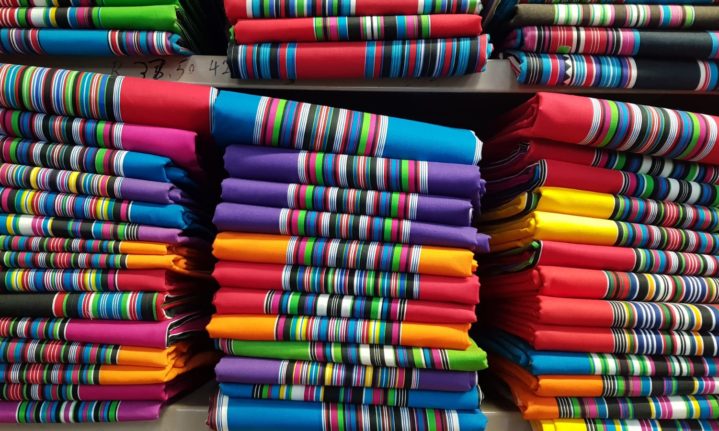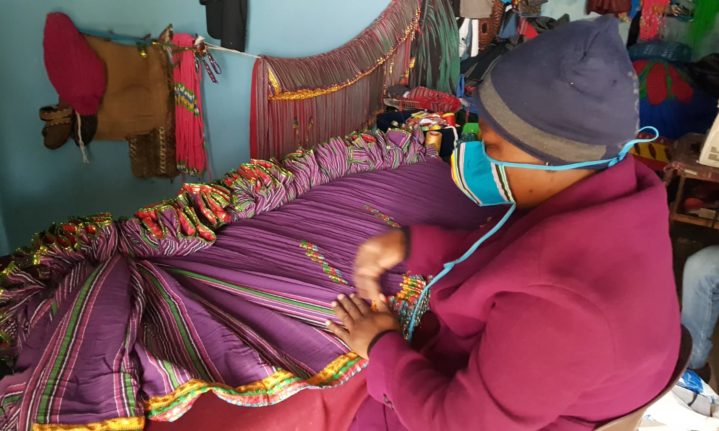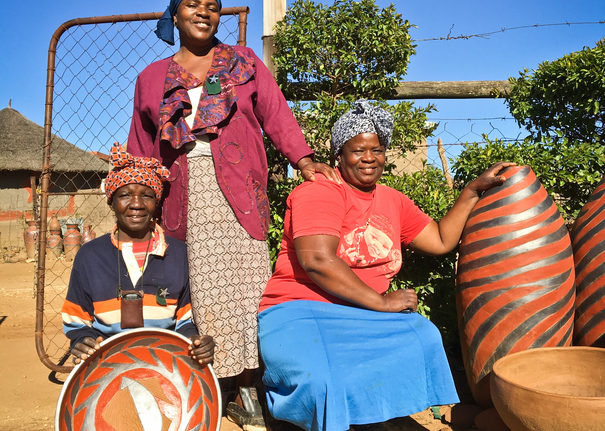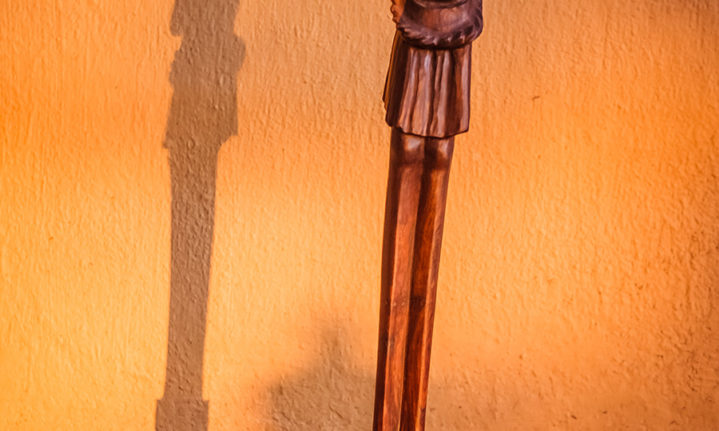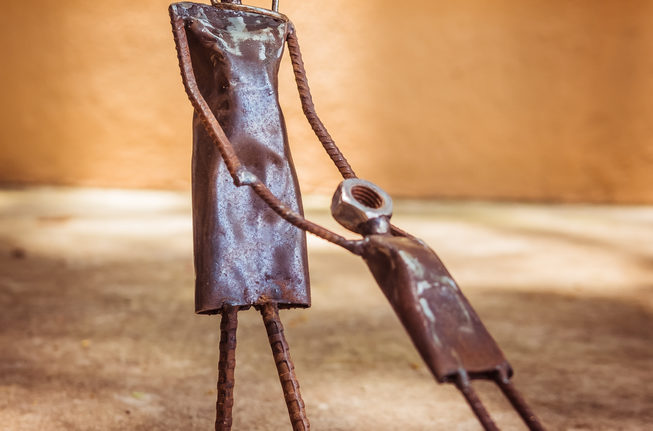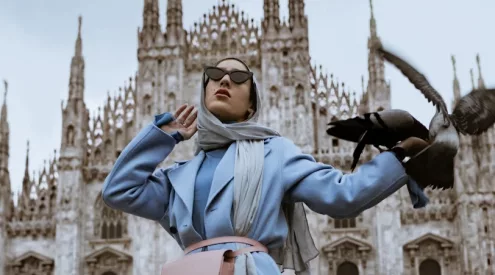Written by Harriet Nimmo
The Ribola Art Route is an undiscovered treasure trail in the heart of rural Limpopo. Two enthusiastic girlfriends and I spent a fascinating day exploring this art route, meeting some of its talented artists and immersing ourselves in Venda and Tsonga culture.
Our day began with Musa, our guide, meeting us at our B&B just outside Louis Trichardt. He joined us in our car and off we went.
The first stop was a fabric emporium located down an unassuming side street in Louis Trichardt. This vast Aladdin’s cave was piled high with bales of material, rolls of cloth and wooden counters crammed with drawers of beads. Musa explained the difference between the Venda and Tsonga cultures and showed us the traditional pleated ‘Shibelani’ skirts that are worn at celebrations, festivals and Heritage Day.
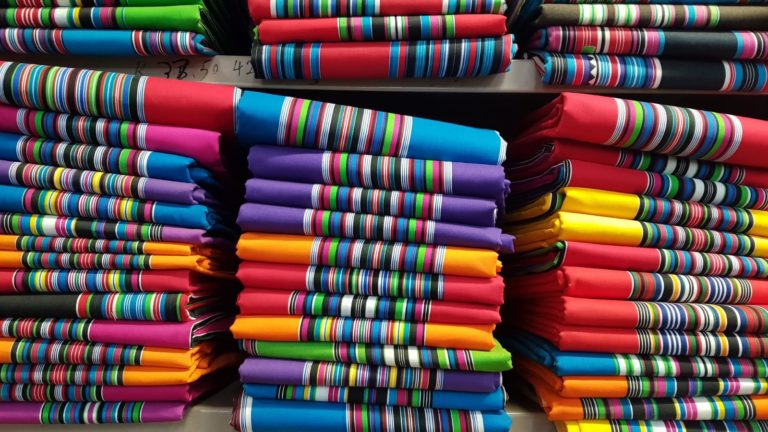
Next on our journey was Elim, a small missionary village and the gateway to the Ribola Art Route. Musa introduced us to a seamstress, working hard in her tiny room, pressing the pleats into one of the fluted skirts. Each skirt is made with 18 metres of fabric – tightly folded into pleats, to emphasise the Tsonga girls’ hips. With so much material the skirts are surprisingly heavy, and there was much hilarity as the mlungu mammas tried them on and swirled around.
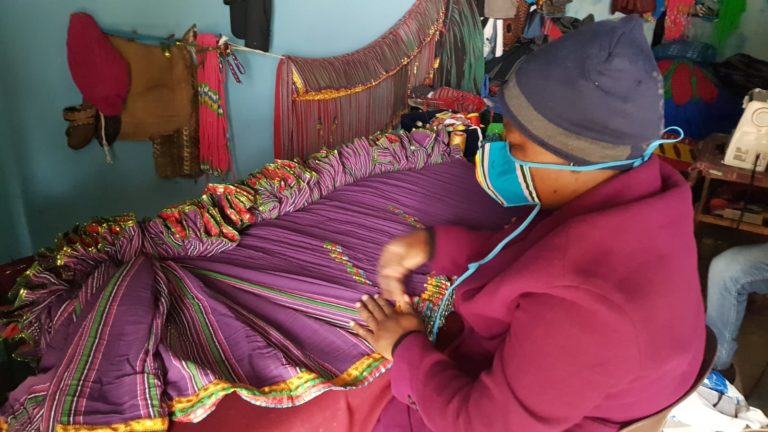
Having seen the beautiful garments, it was time to meet our first artist, Elisa Maluleke. She is a bead and textile artist and her needlework is truly exquisite. Outside her little house, she had laid out examples of her work – cushion covers, table runners, wall hangings, all embroidered with beads, many with the traditional beaded Venda circles. Despite her age, Elisa sat on a little stool hunched over jars of jewelled beads, showing us how she works. The hours of painstaking work that goes into each piece is unimaginable – not to mention her nimble fingers and razor-sharp eyesight.
Next stop was the Mukondeni pottery village, run by a co-operative of local women. This place is easy to spot from the road, as there are pots stacked up everywhere. We wandered around the shed, admiring the pots, dishes and bowls which come in all shapes and sizes. They are a beautiful terracotta red with striking silvery-black graphite zig zags and diamonds.
The red clay is gathered from the local river and the pots are fired on an open fire pit, without the use of a wheel or kiln. One of the women invited us to sit on the floor beside her, showing us how she shapes a lump of wet clay by hand into a symmetrical vase, ready for firing. Fortunately our car had a big boot, as it was soon filled with a pile of pots – the pottery ladies running around trying to find newspapers to wrap our purchases.
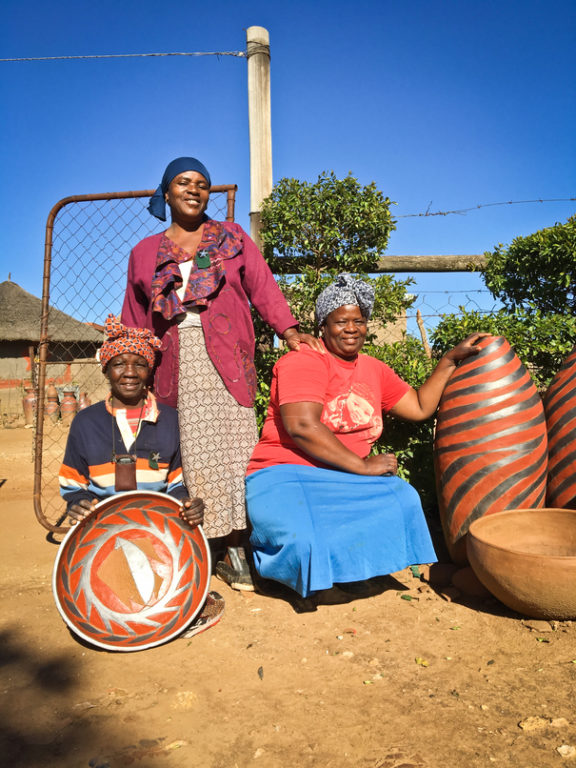
Back in the laden car, we resumed the Ribola Route, with Musa guiding the way as we ventured further into the rural communities. We pulled up alongside an astonishing “MadMax meets the Hobbit” workshop and artist Mafemani Thomas Kubayi welcomed us warmly. Thomas is a renowned woodcarver – and his yard is full of fantastical fish, ethereal angels and a crocodile throne.
We ducked into his gallery, and as our eyes adjusted to the dim light, Thomas began playing hauntingly on his hand-carved wooden xylophone. A man of many talents….Covid, and its resultant lack of tourists, has had a devasting impact on these Limpopo artists. It was heart-breaking to learn that we were Thomas’s first visitors since lockdown began more than 18 months previously.
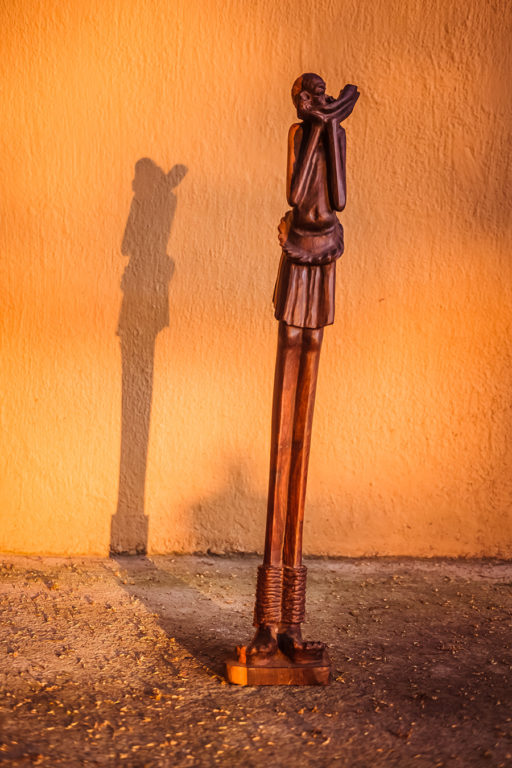
A couple more newspaper-wrapped packages made their way into the back of our car. For one artist, Covid has inspired his creativity. Our final stop was Pilato Bulala – a young artist already making a name for himself with his ‘scraptures’. These are quirky sculptures imaginatively made out of scrap metal, upcycled cogs, spanners, tools and other trash treasures – ranging from 6 inches to 6 feet in size. He is now making Covid themed scraptures – with bolt-studded viruses and mask-wearing figures.
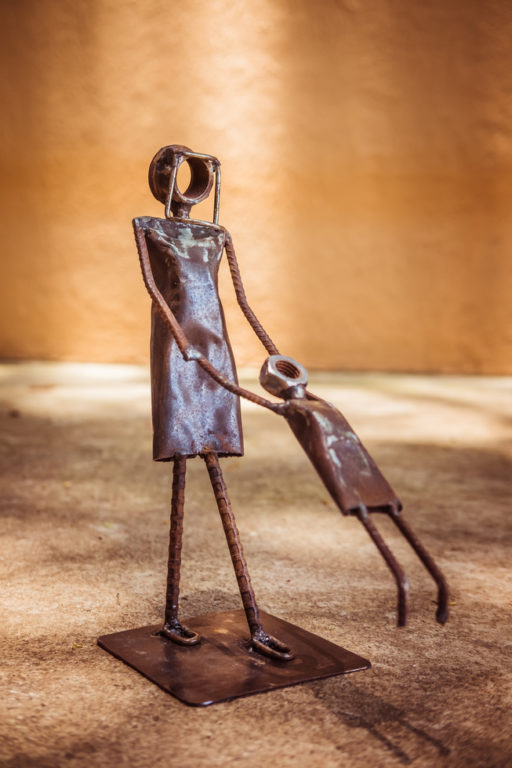
Exploring the Ribola Art Route is a remarkable day out – fascinating, heart-warming and inspiring. We met with just four artists – there are many more who are a part of this initiative. In any other country, this would be a tourist hotspot, and the artists feted and venerated. Yet here in this corner of rural Limpopo, the Ribola Art Route appears to be an undiscovered gem. We learnt so much thanks to Musa our guide – he organised the entire day and his services come highly recommended. Oh, and bring old newspapers and cash….
Pictures: Supplied









